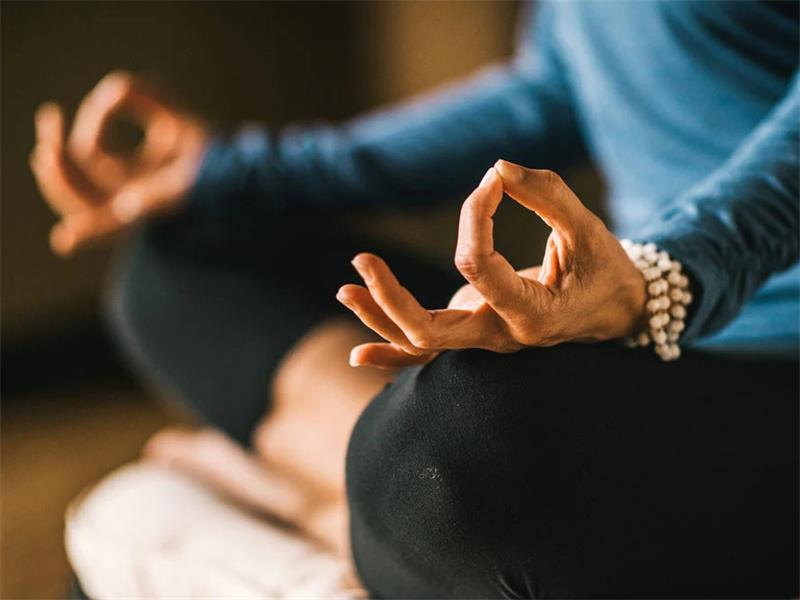Contents
The Importance of Stretching in a Fitness Routine
Stretching is often an overlooked aspect of a fitness routine, but it is crucial for maintaining overall physical health. It is the act of extending or lengthening muscles and joints to their full range of motion.
Regular stretching can improve flexibility, reduce muscle soreness, and improve posture. Stretching should be an integral part of any workout routine, as it can help prevent injuries and improve athletic performance.
Stretching before exercise helps to prepare the body for physical activity by increasing blood flow and warming up muscles. This helps to reduce the risk of injury during exercise.
After exercise, stretching helps to cool down the body and prevent stiffness while also aiding in muscle recovery. Engaging in stretching as part of a fitness routine can also help to increase overall mobility which has long-term benefits for daily life.
Benefits of Stretching
The benefits of stretching go beyond just being able to touch your toes or do a split; there are numerous other advantages that come with incorporating stretching into your fitness routine. One major benefit is improved flexibility, which allows for a greater range of motion in joints and better posture overall. Stretching can also provide relief from muscle soreness after working out by improving blood flow to the muscles and reducing lactic acid buildup.
Additionally, regular stretching can improve balance, coordination, and agility which are important not only in sports but also in everyday activities such as walking or climbing stairs. Beyond physical benefits, stretching has been known to have mental health benefits as well.
It reduces stress levels by promoting relaxation through deep breathing and mindfulness practices that accompany most stretches. It can also help increase focus during workouts by promoting better mind-body awareness.
Incorporating stretches into your fitness routine may not seem like much at first glance but it provides many long-term health benefits that go far beyond just being able to touch your toes or do a split. The health benefits are numerous, and the good news is that it is never too late to start stretching.
Types of Stretching
Static stretching
Static stretching involves holding a stretch for a period of time, usually between 15 to 30 seconds. This type of stretching is often used during the cool-down phase of a workout and is great for improving flexibility and reducing muscle tension.
Some examples of static stretches include the hamstring stretch, quad stretch, and calf stretch. When performing static stretches, it’s important to do them gradually and avoid pushing too hard beyond your limits.
Overstretching can lead to injury or strain on your muscles. It’s also important to hold each stretch for the same amount of time on both sides of your body to maintain balance.
Dynamic stretching
Dynamic stretching involves active movements that take your joints through their full range of motion. It helps warm up the body before exercise by increasing blood flow and loosening up muscles. This type of stretching is great for improving athletic performance and preventing injury.
Examples of dynamic stretches include high knees, walking lunges, leg swings, and arm circles. When performing dynamic stretches, it’s important to focus on proper form and technique to avoid injury.
Proprioceptive neuromuscular facilitation (PNF)
PNF is a more advanced type of stretching that involves contracting and then relaxing specific muscles while being stretched by another person or object like a wall or resistance band. PNF is commonly used in rehabilitation settings but can also be incorporated into regular workout routines. One popular PNF technique is called contract-relax where you contract the muscle being stretched for 5-10 seconds before relaxing it and stretching further with the assistance of a partner or object.
Another PNF technique is called hold-relax where you hold the muscle being stretched in position for 5-10 seconds before relaxing it and then actively moving into a deeper stretch. While PNF stretching can be very effective, it’s important to learn the techniques from a qualified instructor to avoid injury and get the most benefit.
When to Stretch
Stretching at the right time is crucial for reaping its benefits. Let’s go over when you should stretch.
Pre-Workout Stretching
Flexibility exercises before a workout are essential to prepare your body for physical activity. Your warm-up should start with five to ten minutes of light cardio, followed by stretching that focuses on the muscle groups you’ll be using during your workout. Pre-workout stretching helps increase blood flow and oxygen supply, and it prepares your muscles and joints for the upcoming activity.
Here are some pre-workout stretches you can try: – Lunge with a twist to open up your hips and activate your core
– Shoulder circles or rolls to loosen up those upper body muscles – Leg swings or high knees to stretch out those quads and hamstrings
Just remember not to overdo it, as over-stretching can lead to injuries. Keep each stretch gentle, and hold each one for about 15 seconds.
Post-Workout Stretching
Stretching after a workout is just as important as pre-workout stretching. When you exercise, lactic acid builds up in your muscles, which leads to soreness and stiffness. Post-workout stretches help prevent muscle tightness, reduce muscle soreness, and speed up recovery time.
Here are some post-workout stretches you can do: – Seated forward fold or hamstring stretch
– Child’s pose or downward dog (yoga poses) – Chest stretch using a foam roller
Take deep breaths while holding each stretch for 30 seconds. You should also focus on major muscle groups that were worked during exercise.
Tips for Effective Stretching
Now that we’ve gone over when to stretch let’s discuss how you can make the most of your stretching routine. To get the most out of your stretching, you should breathe deeply and evenly while holding the stretch.
Hold each stretch for at least 15-30 seconds, and avoid bouncing or jerking movements during the stretch. These jerking movements can strain your muscles and lead to injury.
It’s also essential that you listen to your body when stretching. Everybody is different, and some stretches might be too intense for you.
If a stretch is causing pain or discomfort, ease off the intensity or stop entirely. Remember that stretching is not a competition.
You are not competing with anyone else except yourself. With regular stretching practice, you’ll notice an improvement in your flexibility over time!
How to Incorporate Stretching into Your Fitness Routine
Start with a Warm-up
Before diving into your stretching routine, it’s important to start with a warm-up. This can be as simple as five to ten minutes of light cardio, such as jogging in place or doing jumping jacks.
A warm-up gets your blood flowing and raises your body temperature, which helps prepare your muscles for stretching. Without a proper warm-up, you risk injuring yourself during stretching.
Focus on Major Muscle Groups
When it comes to stretching, it’s important to focus on major muscle groups such as quads, hamstrings, calves, and glutes. These muscles are often tight and prone to injury if not properly stretched before exercise. It’s also important to stretch the upper body muscles such as the chest, shoulders, and back for better posture and improved range of motion.
Hold Stretches for 15-30 Seconds
When performing stretches, it’s important not to rush through them. Hold each stretch for 15-30 seconds while breathing deeply and evenly throughout the stretch. This gives your muscles time to relax and lengthen properly.
Repeat Stretches 2-3 Times per Muscle Group
To get the full benefits of stretching, you should aim to repeat each stretch 2-3 times per muscle group. This ensures that you’re getting a thorough stretch without overdoing it.
Use Props to Enhance Your Stretches (e.g., foam roller, yoga blocks)
Props such as foam rollers or yoga blocks can be excellent tools for enhancing stretches. For example, using a foam roller on tight areas of your legs can help break up knots in the muscle tissue and increase flexibility.
Incorporate Yoga or Pilates into Your Routine
Yoga and Pilates are both excellent forms of exercise that incorporate stretching and strengthening. Incorporating a yoga or Pilates class into your fitness routine can help improve flexibility, balance, and overall muscle strength.
Plus, the meditative aspect of these practices can help reduce stress and improve mental health. Incorporating stretching into your fitness routine doesn’t have to be complicated.
Start with a warm-up, focus on major muscle groups, hold stretches for 15-30 seconds, repeat stretches 2-3 times per muscle group, use props to enhance your stretches, and consider incorporating yoga or Pilates into your routine. With these tips in mind, you’ll be well on your way to improving flexibility and reducing the risk of injury during exercise.
Tips for Effective Stretching
Breathe deeply and evenly while holding the stretch
When it comes to stretching, many people don’t realize that proper breathing is just as important as the stretch itself. Taking deep breaths can help your muscles relax and improve the effectiveness of your stretches. To breathe properly during a stretch, inhale deeply through your nose and exhale slowly through your mouth.
As you exhale, try to relax the muscle you’re stretching even further. It’s also important to breathe evenly throughout the entire duration of the stretch.
Avoid holding your breath or taking short, shallow breaths. This can cause tension in your body and make it harder to effectively stretch.
Avoid bouncing or jerking movements during the stretch
One of the biggest mistakes people make when stretching is bouncing or jerking their muscles in an attempt to deepen the stretch. However, this can actually be harmful to your muscles and increase your risk of injury.
Instead, focus on holding a steady, static stretch for 15-30 seconds without any sudden movements. This will allow your muscles to gradually loosen up and improve flexibility over time.
Listen to your body and avoid overstretching
Stretching should never be painful – if you feel any sharp pain or discomfort while stretching, stop immediately. Your body has natural limitations when it comes to flexibility, so pushing yourself too far can lead to injury. When stretching, aim for a feeling of tension in the muscle being stretched rather than pain or discomfort.
Remember that everyone’s body is different – what might be easy for one person may be challenging for another person. Listen to your body’s signals and adjust accordingly.
Incorporating these tips into your stretching routine can help you get more out of each session while minimizing the risk of injury: breathe deeply and evenly throughout each stretch without bouncing or jerking movements, and always listen to your body. Stretching may seem like a small part of your fitness routine, but it can have a big impact on your overall health and performance.
Conclusion
Throughout this article, we have delved into the importance of stretching in a fitness routine, the various types of stretching and when to perform them, and how to effectively incorporate them into your fitness routine. By now, you should have a clear understanding of how important stretching is for your overall fitness goals.
Stretching doesn’t just improve your flexibility and range of motion. It also helps prevent injuries, improves circulation throughout the body, and can even reduce stress levels.
By taking just a few minutes each day to stretch before or after your workout, you can make significant strides towards improving your overall health. Incorporating stretches that target major muscle groups like hamstrings, quads, and calves will help loosen up tight muscles that contribute to poor posture or joint pain.
Remember not to rush through stretches; hold each pose for 15-30 seconds to allow for maximum benefit. Be mindful of your breathing while holding stretches as deep breathing can help relax muscles further.
Overall, by incorporating stretching into your fitness routine on a regular basis – whether it be through traditional static stretches or more dynamic options like yoga or Pilates – you will become more aware of how your body works as well as create an environment where you are more prepared for physical activity. So go ahead; take some time today to stretch it out – Your body will thank you!











